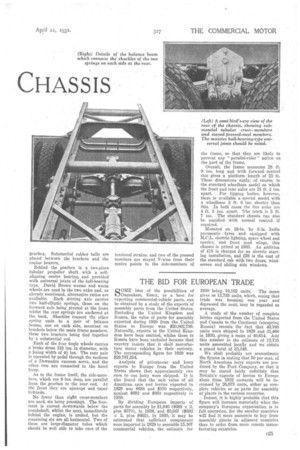THE BID FOR EUROPEAN TRADE
Page 47

If you've noticed an error in this article please click here to report it so we can fix it.
SOME idea of the possibilities of Dagenham, Essex, as a base for exporting commercial-vehicle parts, can be obtained by a study of the exports of assembly parts from the United States. Excluding the United Kingdom and Russia, the value of parts for assembly exported during 1930 from the United States to Europe was $20,802,799. Naturally, exports to the United Kingdom have been omitted, whilse those to Russia have been excluded because that country insists that it shall manufacture motor vehicles in their entirety. The corresponding figure for 1929 was $29,787,254.
Analysis of private-car and lorry exports to Europe from the United States shows that approximately two cars to one lorry were shipped. It is also found that the unit value of all American cars and lorries exported in 1929 was $688 and $570 respectively, against $692 and $663 respectively in 1930.
By dividing European imports of parts for assembly by $1,946 ($688 x 2, plus $570), in 1929; and $2,047 ($692 X 2, plus $663), in 1930, it may be estimated that sufficient components were imported in 1929 to assemble 15,307 commercial vehicles, the estimate for 1930 being 10,162 units. The mean gives us 12,735 units, which, seeing that trade was booming one year and depressed the next, may be regarded as average.
A study of the number of complete lorries exported from the United States and Canada to the Continent (excepting Russia) reveals the fact that 49,768 units were shipped in 1929 and 31,460 in 1930, giving a mean of 40,614 Add this number to the estimate of 12,735 units assembled locally, and we obtain a grand total of 53,349.
We shall probably not overestimate the figures in stating that 50 per cent. of North American lorry exports are produced by the Ford Company, so that it may be stated fairly definitely that Britain's exports of lorries to Europe alone from 1932 onwards will be increased by 26,675 units, either as complete vehicles or as parts for assembly at plants in the various countries.
. Indeed, it is highly probable that this figure will increase materially when the company's European organization is in full operation, for the smaller countries will find it more economic to buy from assembly plants in adjacent countries than to order from more remote manufacturing countries.












































































































